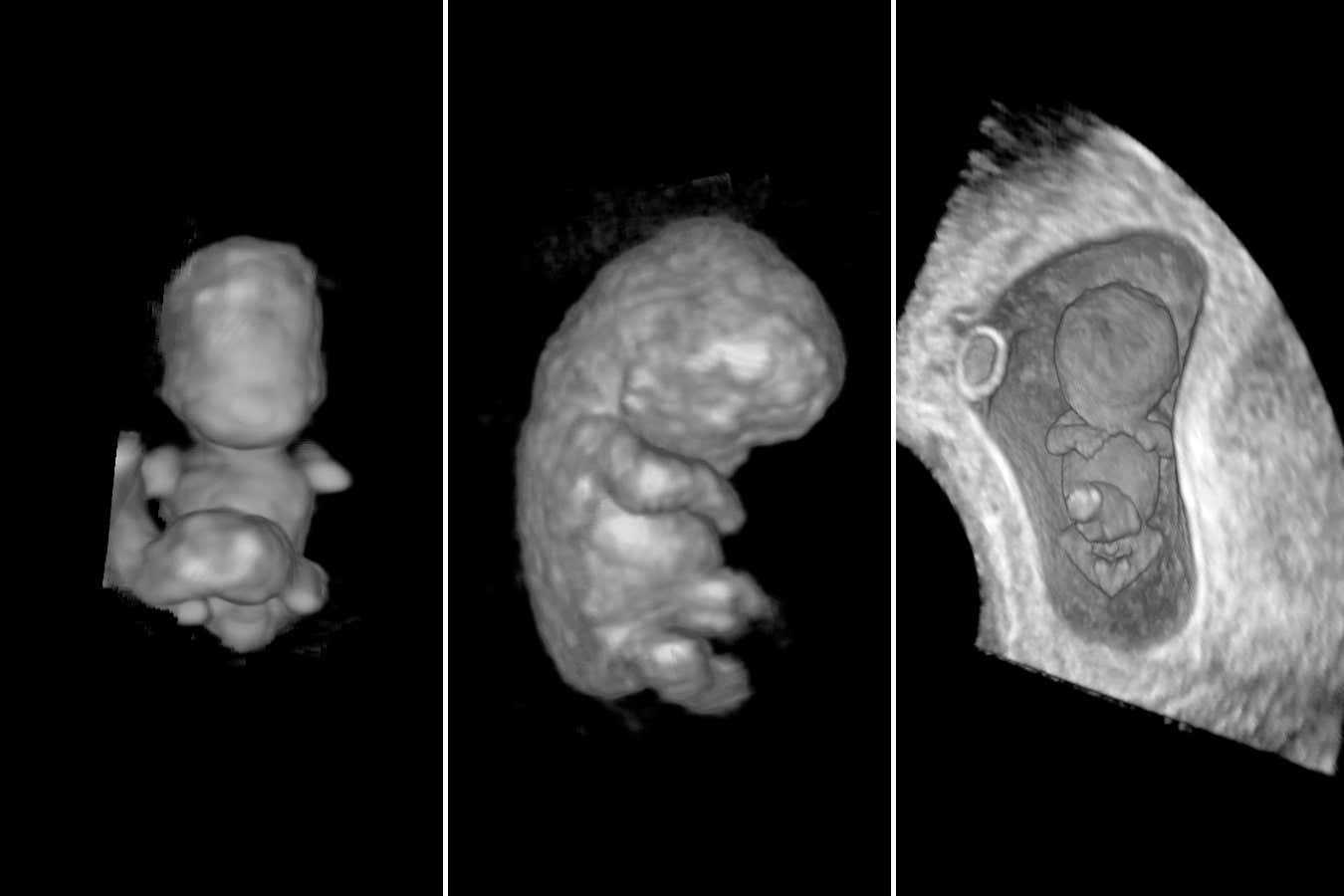Using vaginal ultrasound scans to build detailed 3D images that show an embryo’s growth could predict which pregnancies are most likely to end in miscarriage
By Clare Wilson
27 March 2023
An embryo developing in the uterus at 8 weeks, 9 weeks and 10 weeks
Dr Carsten Pietersma, Erasmus MC
Embryos may develop more slowly in certain pregnancies that end in miscarriage, according to a study that uses virtual reality to visualise them using vaginal ultrasound scans.
The finding could be a step towards predicting from early in a pregnancy if it is likely to lead to a miscarriage, although the technique isn’t yet ready for clinical use, says Melek Rousian at Erasmus University Medical Centre in Rotterdam, the Netherlands.
More than half of all pregnancies end in miscarriage, although in many cases it happens so early that people don’t even realise they were pregnant. Some people have multiple miscarriages without knowing why, meaning their pregnancies can be a time of great anxiety.
Advertisement
To find out more about why miscarriages occur, Rousian’s team developed a way of using vaginal ultrasound scans to build a highly detailed 3D image of an embryo. The image is magnified until it is about the size of an adult and then visually inspected by the researchers while they wear virtual reality headsets.
The team created these images for 644 pregnant women, 33 of whom went on to have miscarriages. Transgender people weren’t included in the study.
When looking at the 3D images, produced at around eight weeks post-conception, the researchers saw that, on average, the embryos that eventually miscarried were developing more slowly, compared with the pregnancies that continued to term.
